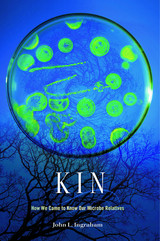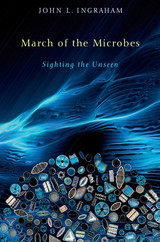
Since Darwin, people have speculated about the evolutionary relationships among dissimilar species, including our connections to the diverse life forms known as microbes. In the 1970s biologists discovered a way to establish these kinships. This new era of exploration began with Linus Pauling’s finding that every protein in every cell contains a huge reservoir of evolutionary history. His discovery opened a research path that has changed the way biologists and others think about the living world. In Kin John L. Ingraham tells the story of these remarkable breakthroughs. His original, accessible history explains how we came to understand our microbe inheritance and the relatedness of all organisms on Earth.
Among the most revolutionary scientific achievements was Carl Woese’s discovery that a large group of organisms previously lumped together with bacteria were in fact a totally distinct form of life, now called the archaea. But the crowning accomplishment has been to construct the Tree of Life—an evolutionary project Darwin dreamed about over a century ago. Today, we know that the Tree’s three main stems are dominated by microbes. The nonmicrobes—plants and animals, including humans—constitute only a small upper branch in one stem.
Knowing the Tree’s structure has given biologists the ability to characterize the complex array of microbial populations that live in us and on us, and investigate how they contribute to health and disease. This knowledge also moves us closer to answering the tantalizing question of how the Tree of Life began, over 3.5 billion years ago.

Though nothing in the natural world would be quite the same without them, microbes go mostly unnoticed. They are the tiny, mighty force behind the pop in Champagne and the holes in Swiss cheese, the granite walls of Yosemite and the white cliffs of Dover, the workings of snowmaking machines, Botox, and gunpowder; and yet we tend to regard them as peripheral, disease-causing, food-spoiling troublemakers. In this book renowned microbiologist John Ingraham rescues these supremely important and ubiquitous microorganisms from their unwonted obscurity by showing us how we can, in fact, see them—and appreciate their vast and varied role in nature and our lives.
Though we might not be able to see microbes firsthand, the consequences of their activities are readily apparent to our unaided senses. March of the Microbes shows us how to examine, study, and appreciate microbes in the manner of a birdwatcher, by making sightings of microbial activities and thereby identifying particular microbes as well as understanding what they do and how they do it. The sightings are as different as a smelly rock cod, a bottle of Chateau d’Yquem, a moment in the Salem witch trials, and white clouds over the ocean. Together they summarize the impact of microbes on our planet, its atmosphere, geology, weather, and other organisms including ourselves, to whom they dole out fatal illnesses and vital nutrients alike.
In the end, Ingraham leaves us marveling at the power and persistence of microbes on our planet and gives credence to Louis Pasteur’s famous assertion that “microbes will have the last word.”
READERS
Browse our collection.
PUBLISHERS
See BiblioVault's publisher services.
STUDENT SERVICES
Files for college accessibility offices.
UChicago Accessibility Resources
home | accessibility | search | about | contact us
BiblioVault ® 2001 - 2024
The University of Chicago Press









